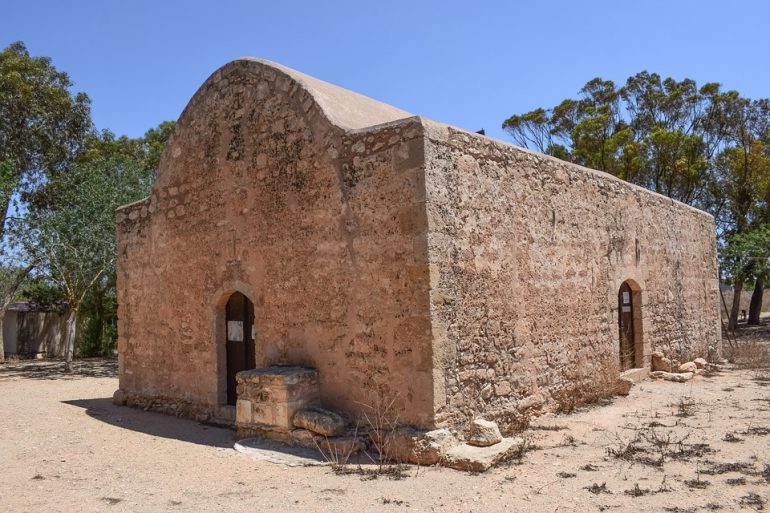By Dimitris Kyriakou and Polyvios Konis
In two churches in Frenaros, dating to the Venetian period, there are engraved depictions of ships that have important historical and cultural significance. The following text is part of a larger study.
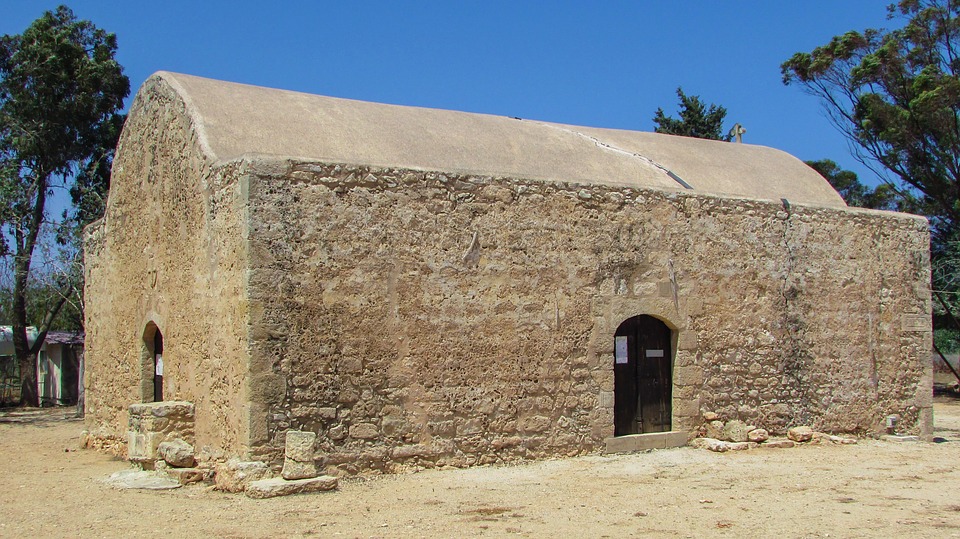
In the church of Panagia Asprovouniotissa, we have two engraved ships individually and most likely they were engraved in different time periods. The ship engraved on the north wall of the Holy Step seems to be contemporary with the monument. It is very likely to be a votive gift or thanksgiving to the Virgin Mary and may be related to a donor, perhaps a wealthy Venetian sailor, who wanted to have the support of the Virgin Mary with the depiction of the ship. Another assumption we can make is that the ship was anchored as a wish-request of the inhabitants so that the fleet that Markantonios Bragadinos was waiting for when the city of Famagusta was under Turkish siege in 1570-71 arrived. The ship has several similarities with those in the church of Agia Marina and belongs to the type of galley with a mast.
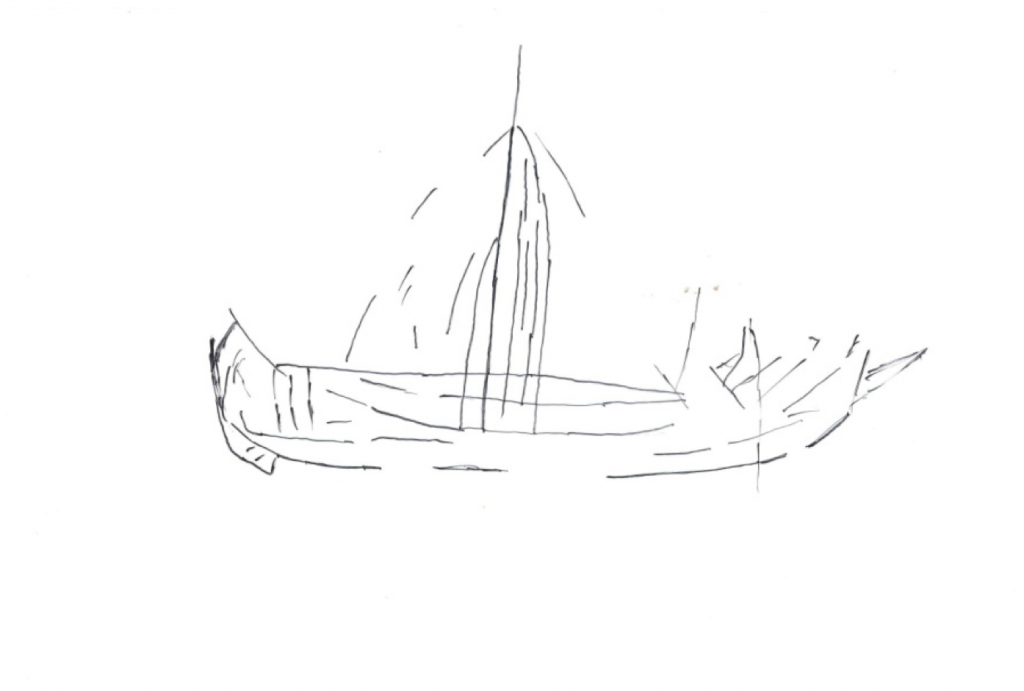
As for the other ship, it is engraved on the mural with Agios Nikolaos, which it has destroyed in various places. We are sure that it was engraved much later by a donor who wanted the image of the ship to have the support of the patron saint of sailors. The ship depicted is in the type of a three-masted Venetian galley with all its sails open.
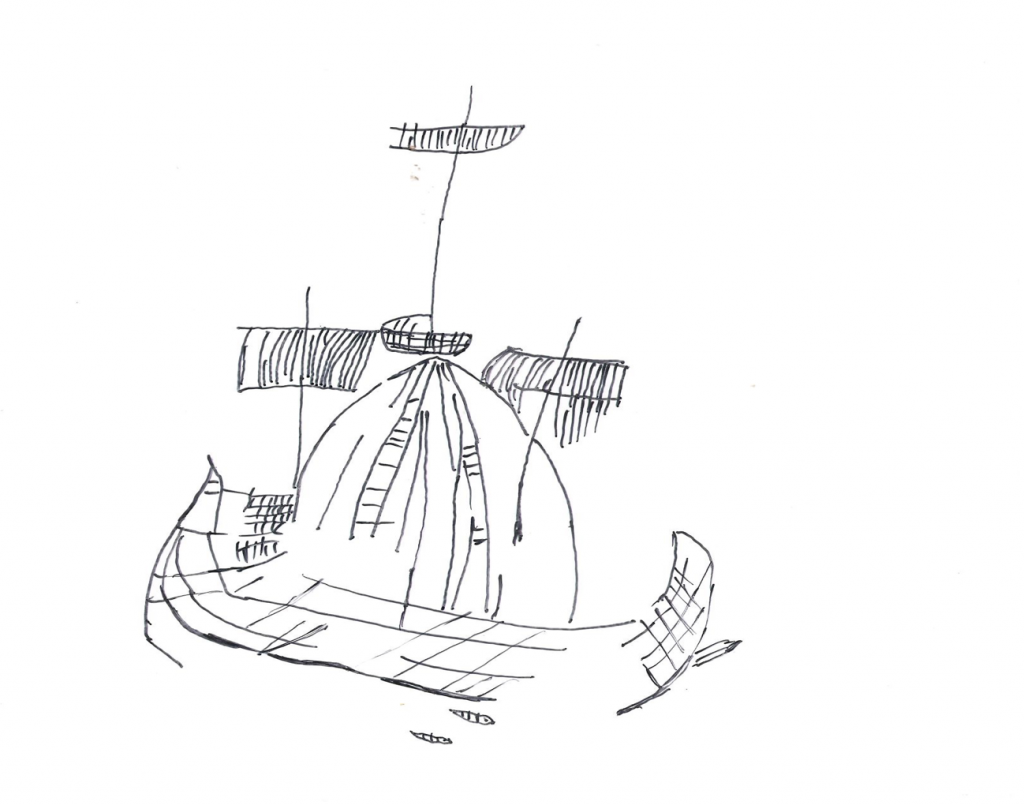
In the church of Agia Marina the engraved ships cover almost the entire north wall. We have a wide range of ships, a total of seven, but also many unrecognized engravings. Observing the ships carefully we managed to capture and photograph seven ships starting from west to east.
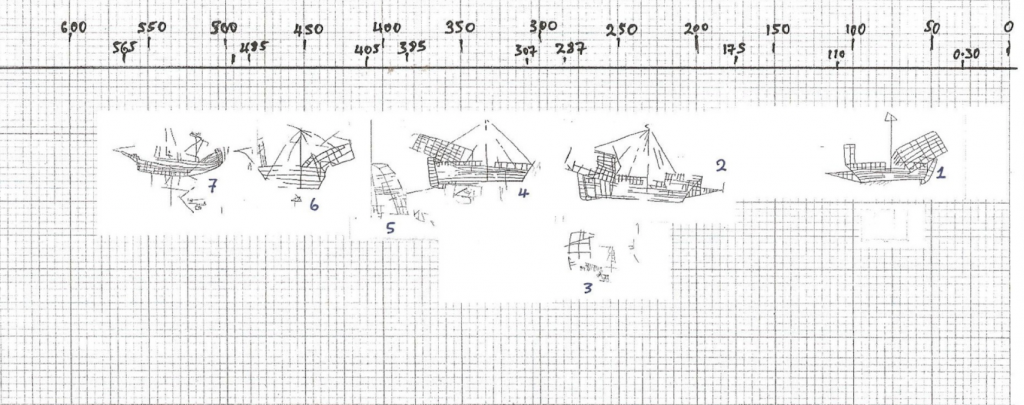
However, it is certain that there were other ships that have not been rescued or only some parts of them have been rescued. Even under some ships we see objects that may be wooden barrels, masts, ropes that fell from the ships during the storm or naval battle.
The engraved ships on the north wall of the church of Agia Marina depict, with almost certainty, a type of galley. As we know it today, the galley was used mainly in the Middle Ages, but its ancestors must be traced back to antiquity (Humble, 2004). This ship was used mainly in the Mediterranean, where climatic conditions, sea currents and hospitable ports, made its use safe. A mainly warship, the galley was also used for trade purposes. The length of the galley exceeded 45 meters and its width often reached 6 m. On each side it carried about 26 oars, which were pulled by slaves or convicts. The latter, together with the help of one to three masts, were the driving force of the ship. The galleys were the pre-eminent warships of the Venetians with the most characteristic example being the large Venetian galley. A ship easy to maneuver and often armed with cannons. Cyprus, the Ionian Islands and Crete had the obligation to maintain two galleys, which could be recalled from Venice in critical times. The maintenance of the two galleys cost in Cyprus 450-600 ducats per year. All the ports of Cyprus were able to accept Venetian galleys, most, up to ten, could accept Famagusta.
From the galley came various types of boats such as the small galley with a single mast, the galley larger than the galley up to 70 meters long and 15 meters wide, three masts, deck and tower, up to 36 guns, and between 24-32 oars . The large galleys were called capitanes and flagships (reales), while the common galleys were called senzilles. In the north wall of Agia Marina the ships are presented with a single mast, while in one case the ship in the western part of the north wall, depicts a ship with two masts.
With the advent of the cannon, the galleys were the first ships to be equipped with this new weapon, which, however, was initially limited to the bow, in a closed artillery called a ramp. The bow of the galleys ended up in a kind of piston and bridge which was used for results on enemy ships. The pistons are clearly depicted on ships no. 1 and 2 (photos 3-4) which are located opposite each other and most likely on ship no.4.
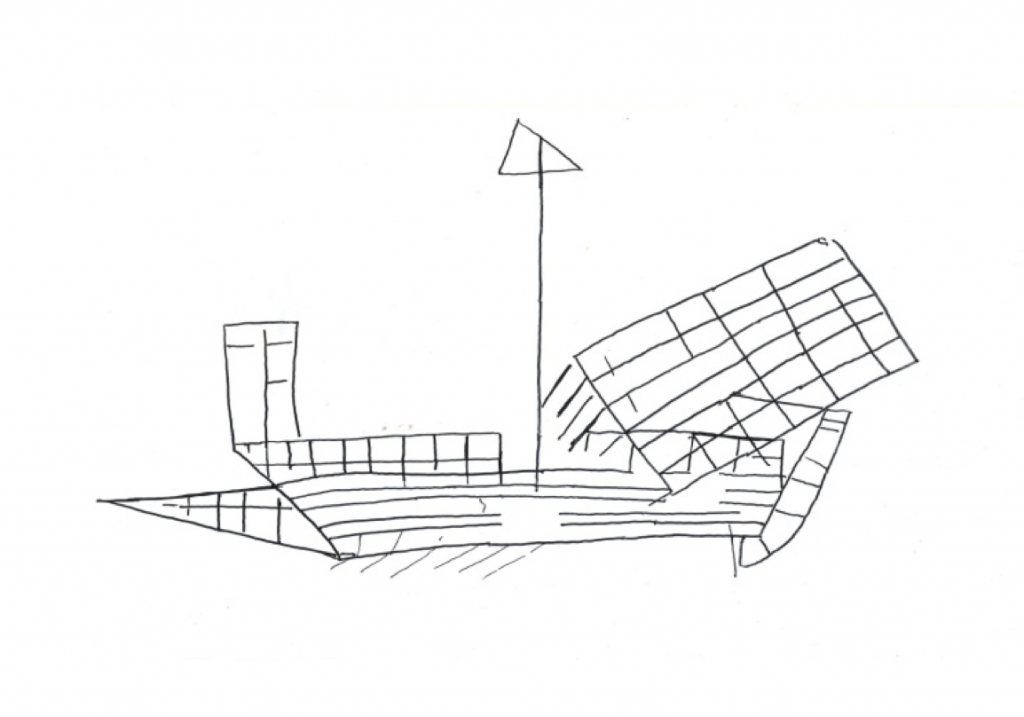
© Dimitris Kyriakou, Polyvios Konis, 2018

© Dimitris Kyriakou, Polyvios Konis, 2018
The identification of these two ships as galleys is based in part on the particular characteristics of these ships but also on the similarities they have with ship illustrations on maps of the 15th and 16th centuries, such as the GF Camocio Tinos Map: Map of Tinos, copper engraving (1571-1575) (Sphyroeras et al. 1985).
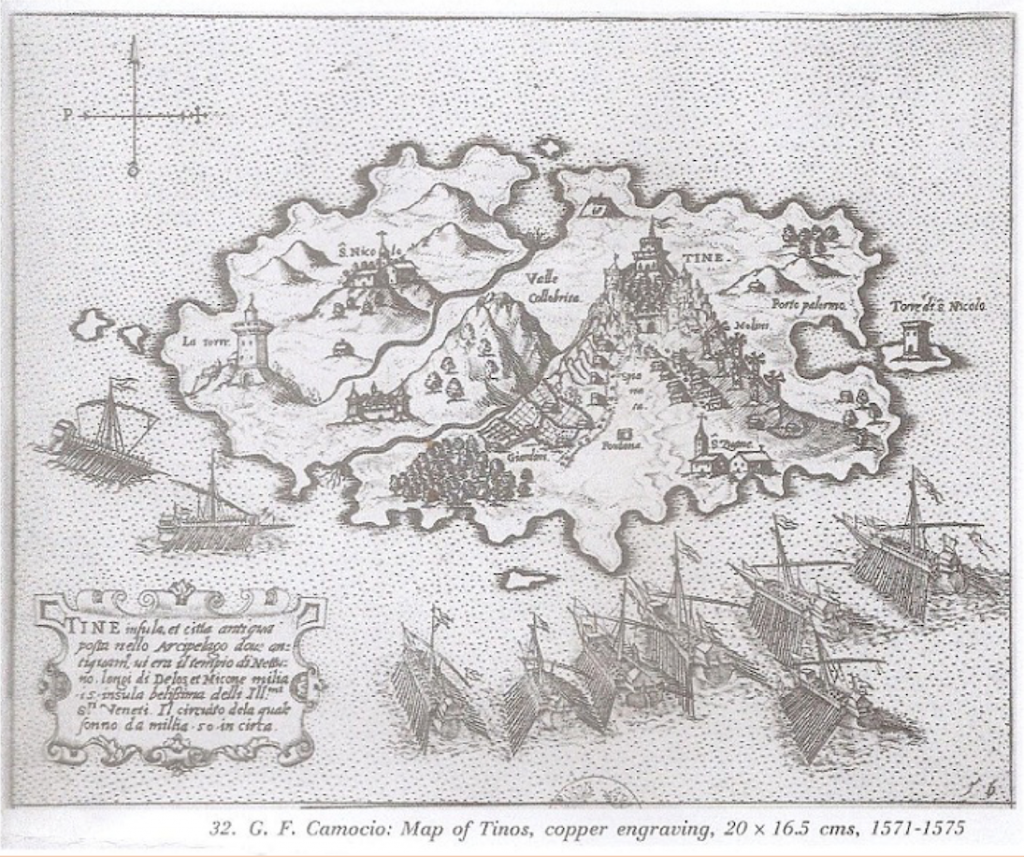
Apart from galleys, the wall of Agia Marina also preserves a different type of ship, the Venetian hut (Humble, 2004). This ship first appeared in Europe around the 12th century. Made for offshore voyages, the hut had an elevated bow, which is shorter in length as shown on Ship No. 6 but is taller than the others.

© Dimitris Kyriakou, Polyvios Konis, 2018
Very different from the others is the ship no.7 which seems to belong to the type of large galley or galley.
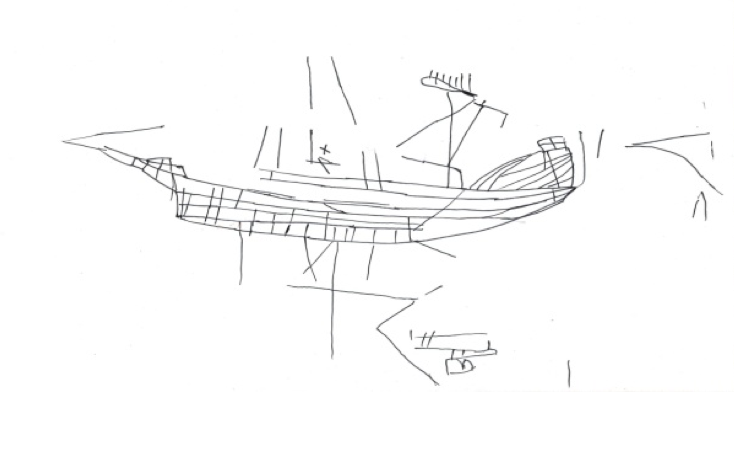
© Dimitris Kyriakou, Polyvios Konis, 2018
The number and the different types of ships lead us in two directions. A convoy, like the ones that started from Venice to the ports of the East or a naval battle? The second case seems to be the most probable and the biggest proof for this are the pieces from ships, masts, sails and other objects that are lower (probably at the bottom) in the whole area of the north wall and in one the rudder stands out.
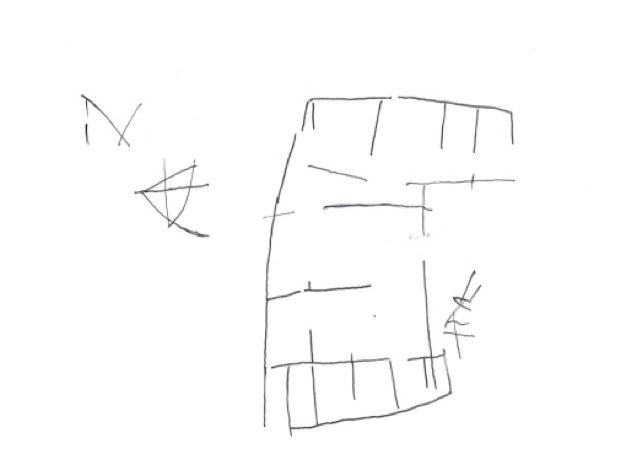
© Dimitris Kyriakou, Polyvios Konis, 2018
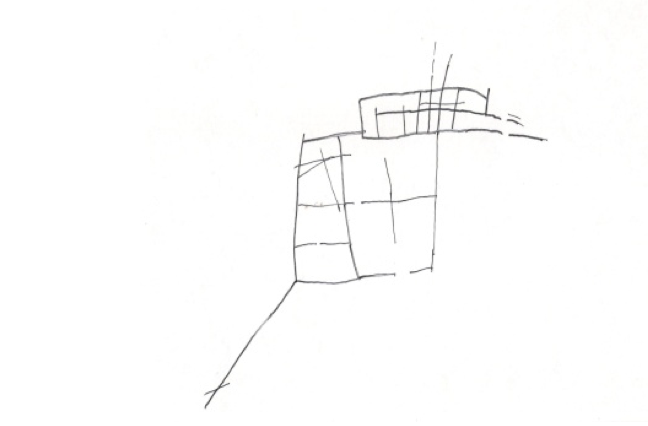
© Dimitris Kyriakou, Polyvios Konis, 2018
Lower are boats with damaged wreckage near them.
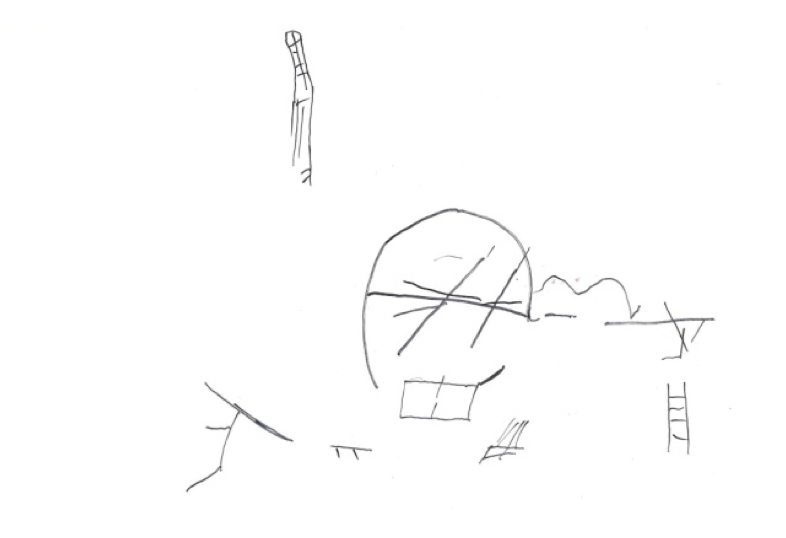
© Dimitris Kyriakou, Polyvios Konis, 2018
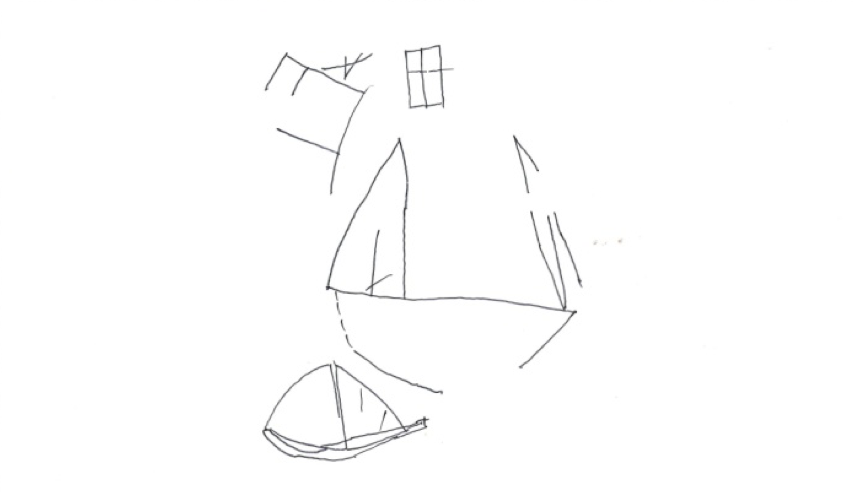
© Dimitris Kyriakou, Polyvios Konis, 2018
Even more important are the two wrecked and sunken ships that are in line, but a little lower, with the other five ships. Ship No. 3 is completely submerged and the other No. 5 inoculated by Ship No. 4 is displayed vertically at the time of sinking.
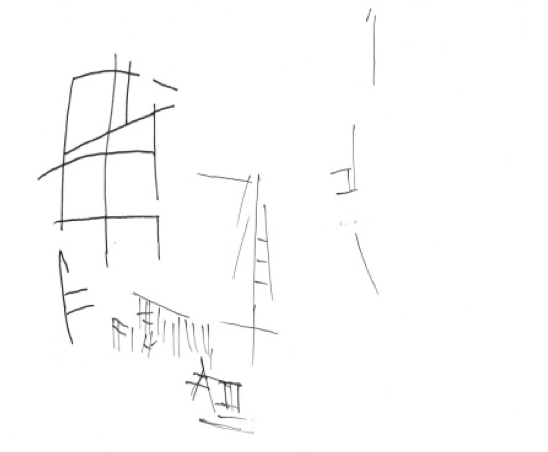
© Dimitris Kyriakou, Polyvios Konis, 2018
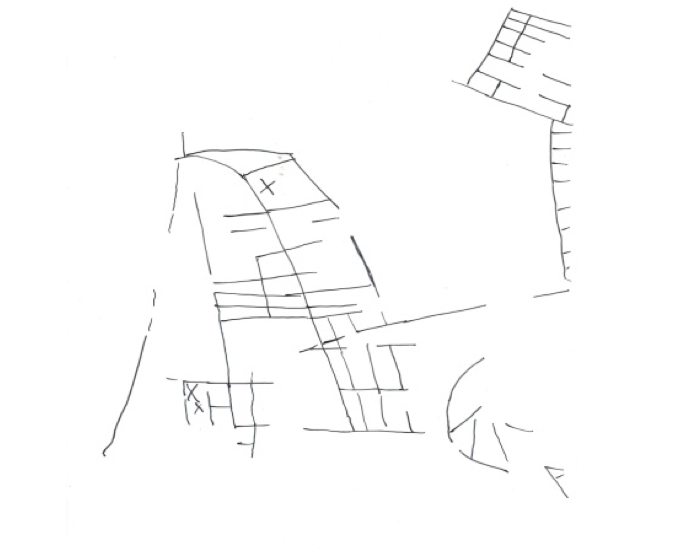
© Dimitris Kyriakou, Polyvios Konis, 2018
Many possibilities open up here, either the memory of a successful battle for Christians, such as the unsuccessful siege of Malta by the Ottomans, or the desire for a successful outcome of a naval battle. An even closer interpretation would be the connection with the siege and occupation of Rhodes (1522) or the naval battle of Preveza (1538), dates very close to the erection of the monument. Another case is the inscriptions related to the siege of Famagusta 1570-71 and the request from the inhabitants of the island for the help that Bragadinos was waiting for to arrive. The last possibility is related to a local conflict between the Venetians and the Turks that had a happy ending for the former and the engravings are a thank you to the Saint from the naval owner who contributed to the successful outcome. Besides, we believe that the monument is an offer of a rich Venetian sailor, as evidenced by the frescoes of the crucifixion and the engravings. It is not ruled out that the monument may be the burial place of the owner and other members of his family, as evidenced by the blind arches on the walls. All the indications are real but not enough to firmly and confidently support some of our speculations. We hope that some other facts that may come to light in the future will help to fully identify the engraved naval battle with a specific historical event. For the time being, we are content with the possible cases and we believe that the scientific community will move to save the monument that is in danger of collapsing.
Famagusta.News
